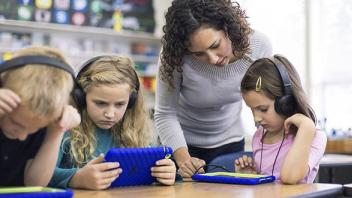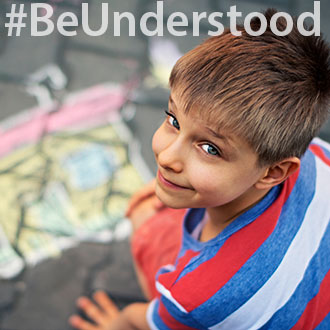Assistive technology (AT) can be a powerful way to help children with reading issues, including kids with dyslexia. But with so many tools available, it’s not always easy to know which ones will work for your child. It can also be tricky to figure out how to access them, and on which device.
To help, here’s a guide to AT tools for reading and where to find them.
Types of assistive technology tools for reading
Kids learn in different ways and at different paces.
It’s important to teach to each student’s individual strengths, skills and needs. This is true for all kids — not just kids with learning and attention issues.
7 Things to Know About the 1 in 5 with Learning and Attention Issues
Here are some of the most helpful AT tools for reading.
- Text-to-speech (TTS) lets kids see text and hear it read aloud at the same time. To use this tool, kids click on or highlight words, and the words are read by a computer-generated voice. TTS can be used with books, emails, web pages and any digital text. It can also be used to convert text files into audio files.
- Audiobooks and digital TTS books allow kids to hear books read aloud. Some kids like to read along with the book so they can see the words at the same time. Audiobooks are read by human voices. Digital TTS books are created with TTS, and use computer-generated voices.
- Optical character recognition (OCR) reads aloud text from images and pictures. Kids with reading issues can use OCR by taking photos of worksheets and other documents, and even objects like street signs. They can also scan documents in. OCR can read words from pictures on web pages (such as image files, like JPG). Like TTS, OCR uses computer-generated voices.
- Graphic organizers are visual representations, like diagrams and mind maps, of ideas and concepts. Kids can use graphic organizers to take notes while reading, which can help with comprehension. Graphic organizers can be digital or pen and paper.
- Annotation tools let kids take notes and write comments while reading. This can make it easier to retain information. Annotation tools can be found on certain software or apps, or they can be traditional pens, markers and sticky notes.
- Display control allows kids to control how text is displayed. When reading on a screen, they can change the font, font size, color and spacing of text. Kids can also mask or cover parts of the screen to lessen distractions while reading. When reading on paper, they can use a simple adaptive tool, like a plastic reading guide. Some books use large print or special fonts. Or they may replace certain words with images.
- Dictionaries and thesauri allow kids to look up words they don’t understand when reading. A picture dictionary is a popular tool that uses images to define words. And a talking dictionary reads definitions aloud.
Where to access assistive technology for reading
Some reading tools are “low-tech.” There are traditional classroom tools like sticky notes and highlighter pens. You can typically find them at any store that sells school supplies.
Your child’s school or teacher may be able to provide certain adaptive tools, like reading guides or special worksheets. You can check with the school or local library to access certain stand-alone technology tools, like books on tape or CD (kids will need an audio player to use them). You may also want to learn about where to find free audiobooks and digital TTS books .
Today, however, most AT tools for reading are used on one of three computer platforms for assistive technology:
- Desktop and laptop computers: Computers typically have built-in AT options, like TTS. You can download software programs for reading issues to add more AT functions to computers.
- Mobile devices (like tablets and smartphones): Mobile devices also have built-in AT. You can add more reading tools to mobile devices with apps. Explore Tech Finder to find apps for reading issues .
- Chromebooks (and Chrome browsers on any device): Chromebooks also have built-in AT. And you can add Chrome apps and extensions to help kids with reading issues even more.
Find out whether schools will pay for reading tools for your child. And get advice on the first assistive technology to try for your child .
Watch as an expert explains more about assistive technology for reading, and how it helps her son with dyslexia.
Key takeaways
- TTS, audiobooks and digital TTS books all let kids hear text read aloud.
- Laptops and desktops, mobile devices and Chrome offer built-in assistive technology tools for reading.
- There are also low-tech assistive technology options, like sticky notes and highlighters.
This article originally appeared on Understood.org , a free online resource for parents of children with learning and attention issues. Reprinted courtesy of Understood.org © 2018 Understood, LLC. All rights reserved.


